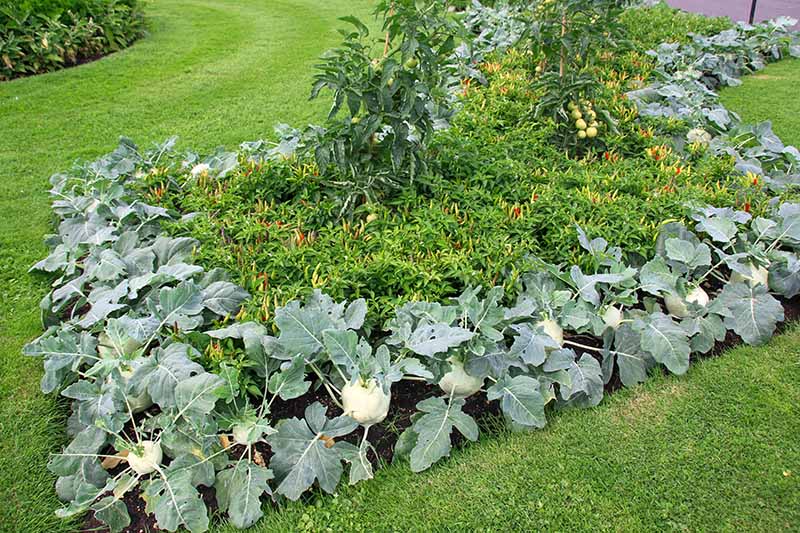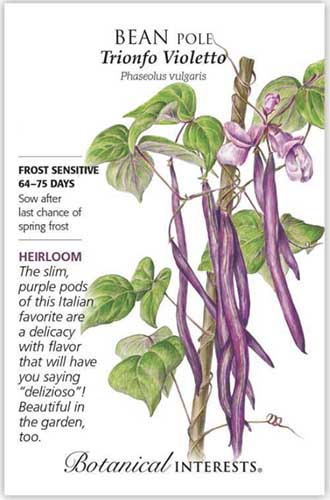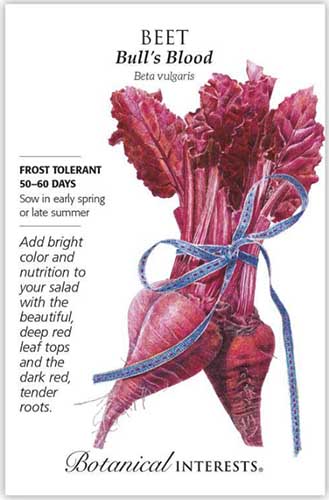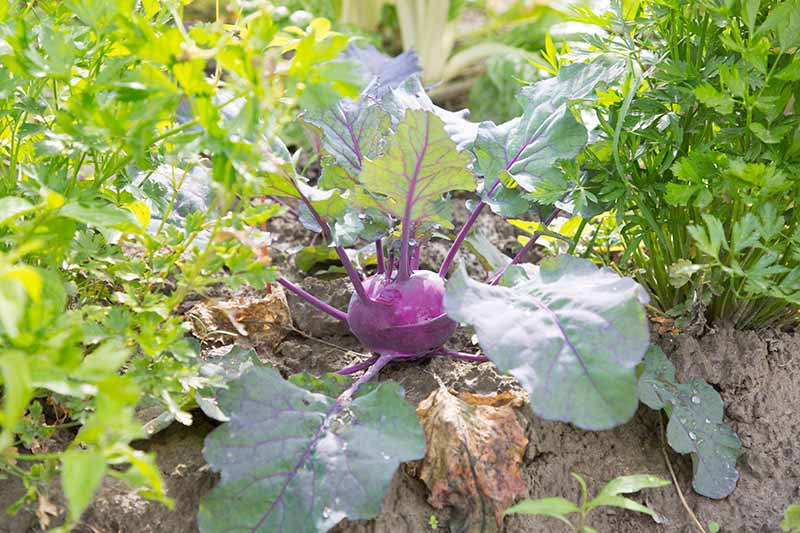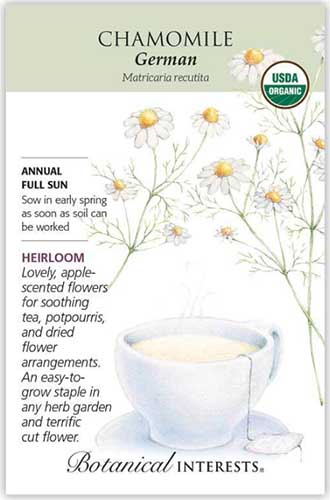Kohlrabi, Brassica oleracea var. gongylodes, is a brassica, and it’s one of the oddest-looking cole crops you can grow. It sports an above-ground bulb in purple or light green that sprouts stalks of the same color with green leaves. You’ll need to get a little creative in finding either vegetables or cool-season ornamentals that will look attractive growing or blooming alongside it. But you’ll want to be sensible, too, growing this vegetable next to plants that will deter the pests it’s prone to. The ideal companions may also attract beneficial insects, cast some shade as the weather warms up, or improve the use of soil nutrients in your garden. Some of my suggested companions provide two or more of these benefits in combination. We link to vendors to help you find relevant products. If you buy from one of our links, we may earn a commission. There is hard science behind some of the rules for choosing vegetables to grow next to each other to benefit one or both, but some of what we know is more a matter of shared experience akin to folk wisdom – particularly the claims that one plant will make the fruit of another taste better. When companion planting recommendations come from these sources versus the science lab, I always like to offer the advice to go ahead and try it when it’s appealing. Most of the do’s and don’ts aren’t that restrictive, and you might find a tried-and-true combo that will work for you. To aid the cause, I’ve amassed a list of pairings that also look good together, or provide more pragmatic benefits to each other. I’ll share a few plants that should not be grouped close to this odd-but-tasty cole crop as well, for both their sakes. Ready to choose some buddies and banish a few others? Here’s the lineup: No matter where you choose to grow these cool-season veggies, placing the best companions nearby may give them the full benefit of pest protection, moisture retention, a nutrient boost, and visual interest to boot. These plants make the best neighbors:
Bad Companions
Along with choosing good companions, there are a few plants you’ll want to keep away from this cole crop. This is beneficial whether you plant the beans the season before so they can enrich the soil for plants to come, or if you choose to grow them alongside this crisp veggie. I like to plant kohlrabi at the base of eight to 10 trellised pole bean plants. That way, by the time the weather heats up a little in late spring or early summer, the vines are tall enough to throw shade on the cool-weather crop, which cools both air and soil and serves to extend the season a bit. ‘Trionfo Violetto’ Beans Varieties of beans that produce purple pods also contribute a playful complementary color combo with kohlrabi. One suitable choice is ‘Trionfo Violetto,’ a pole bean which matures 64 days from sowing. ‘Trionfo Violetto’ seeds are available in 10-gram packets from Botanical Interests. Learn more about growing beans in our guide.
2. Beets
Like broccoli and some other brassicas, kohlrabi roots take up significant amounts of calcium from the soil. Happily, beets (Beta vulgaris) don’t need much of that particular mineral to satisfy their nutritional needs, so the two get along quite well when planted together. ‘Bull’s Blood’ Beet And if you opt for a cultivar of B. oleracea var. gongylodes with light green bulbs, like ‘White Vienna,’ and a beet variety with red stalks and red leaves, such as ‘Bull’s Blood,’ the two will look fetching interspersed in your garden. ‘Bull’s Blood’ beet seeds are available in three-gram packets from Botanical Interests. Read more about sowing and growing your own beets here.
3. Celery
The idea that celery improves the flavor of nearby brassicas is a bit of folk wisdom. Since the plants are good at sharing space without spreading, you may want to grow them as neighbors, despite the lack of hard scientific evidence to support this. See for yourself if the better taste claim holds true. Celery appreciates cool weather, so you can time the two sets of plants to be harvested simultaneously, then clear the whole bed for a different crop. ‘Tendercrisp’ Celery The ‘Tendercrisp’ variety grows up 26 inches tall, and needs to be spaced about six inches to a foot from the nearest plant. ‘Tendercrisp’ seeds are available in various packet sizes and one-pound sacks from True Leaf Market. Learn to grow celery in our guide.
4. Chamomile
Chamomile flowers are cute, and they look like miniature daisies, so I think they’re attractive growing near colorful, rustic kohlrabi. This beneficial herb also repels pests like whiteflies, attracts beneficial wasps and ladybugs, and fights off fungal diseases including powdery mildew. Even if you grow chamomile far away from any members of the cabbage family, make sure to stew the leaves and use the tea to spray it on the young plants if they’re growing elsewhere in your garden. This will help to prevent damping off, a debilitating fungal infection that may strike the youngest seedlings in particular. German Chamomile Packets of organic or conventional German chamomile seeds are available from Botanical Interests. Learn more about growing chamomile here.
5. Chives
All onion family members, or alliums, can repel the moths, mites, aphids, and flea beetles that often plague brassicas. Chives My top companion recommendation here is to grow chives (Allium schoenoprasum), because they also burst forth with light purple flowers that look lovely next to kohlrabi in any color. True Leaf Market sells chive seeds in various packet sizes and one-pound sacks. Learn more about growing your own chives in our guide.
6. Dill
The aromatic yellow flowers of dill (Anethum graveolens) are highly appealing to beneficial insects like wasps and hoverflies that dispatch kohlrabi enemies like aphids and young cabbage worms. ‘Mammoth’ Dill And this herb will bloom in time to prove helpful throughout most of the growing season. Both kohlrabi and dill can be planted in early spring, or started as a second crop for early autumn. Live ‘Mammoth’ dill plants are available from Burpee. Learn how to plant and grow dill in our guide.
7. Nasturtiums
This vibrant annual flower with its peppery, edible blooms helps to protect cole crops from cabbage loopers, Trichoplusia ni. Nasturtiums also spread to act as ground cover, which helps to retain the moisture that is so beloved by kohlrabi, while helping the gardener to save time on weeding as well. ‘Butterscotch’ Nasturtiums Like some of the herbs that have been mentioned already, nasturtiums also attract predatory wasps and other beneficial insects that love to prey on aphids. Seeds for the deep yellow ‘Butterscotch’ variety are available in three-gram packets from Botanical Interests. Learn more about growing nasturtiums in our comprehensive guide.
8. Rosemary
The perennial herb known as rosemary (Salvia rosmarinus) will benefit kohlrabi as a neighbor, but keep in mind that it isn’t an annual. This means you should plant it near the vegetable garden, not in it. Otherwise, you’ll expend a lot of energy trying to cultivate around it as you rotate your vegetable crops and sow new ones each spring. With that said, planting rosemary on the border of the vegetable plot or in a container you can place nearby will provide you with an easy-to-grow culinary herb that also deters cabbage moths (Mamestra brassicae) and cabbage loopers (Trichoplusia ni). ‘Prostratus’ Rosemary And old-timers swear by pruning rosemary and spreading the fresh or dried sprigs on the ground near brassicas to repel slugs and snails. The reasoning behind this is that those pests don’t like to slide over the spiky leaves. Live ‘Prostratus’ rosemary plants are available for purchase from Burpee. Check out our guide to learn how to plant and grow rosemary.
9. Sweet Alyssum
Not everything that plays well with kohlrabi in the garden will make it into the kitchen! The flowering annual that’s commonly called sweet alyssum (Lobularia maritima), for example, is fragrant and has appealing white blooms, but it’s not edible. But it offers so many other benefits as a buddy for members of the cabbage family that it’s still a good use of garden space. For one, it attracts hoverflies, which take care of the aphids that often plague brassicas. Two, its mounding habit is helpful to cover bare soil in the garden, reducing weeds and retaining moisture. Three, it won’t compete for nutrients when you plant it next to heavy feeders. ‘Tiny Tim’ Sweet Alyssum Most importantly, though, it blooms in early spring, about the same time when cool-season veggies need pollinators and beneficial insects to pay them a visit. And it’s cost-effective, growing from inexpensive seed and sprouting just five to seven days after sowing. ‘Tiny Tim’ sweet alyssum seeds are available from Eden Brothers in various packet sizes. Learn more about planting this fragrant annual in your garden with this guide. To start, I have a bit of disappointing news. Once you’ve located (or created) a spot that meets all of kohlrabi’s growing needs, you might imagine that its fellow brassicas like kale and broccoli would be suitable choices to grow there as well. But while these other cabbage family cole crops do thrive in the same type of soil and level of light, propagating different types of brassica plants near each other means they can each attract pests that will adversely affect all of them once they arrive. Avoid planting one giant pest magnet if at all possible! Also, the brassicas are heavy feeders and they need ample moisture, so planting them close together means they’ll have to compete for water and nutrients. That can lead to stunted growth, yellowing leaves, and low yields. Other fruits and vegetables that are heavy feeders and make bad kohlrabi neighbors include corn, cucurbits like summer squash or pumpkins, peppers, strawberries, and tomatoes. If you must plant any of these nutrient fiends close to your kohlrabi, prepare by adding lots of organic matter to the soil ahead of planting, and plan to water and fertilize regularly throughout the late spring and summer. And don’t forget that a few plants are allelopathic to brassicas, meaning they produce chemicals that keep them from growing well. The chemicals get into the soil when rain washes them down or the leaves fall onto the garden plot. Sunflowers, including Helianthus annuus and some other species, can prevent nearby seeds from germinating, for example. Nor will kohlrabi fare well planted within 50 feet of a black walnut (Juglans nigra), which produces a chemical known as juglone that can cause the plants to wilt, turn yellow, or languish. For more information on black walnut juglone toxicity and ways to avoid it, see our guide. If a certain pairing doesn’t suit you – or it doesn’t produce healthy plants – you can always try something new next year, or even with successive plantings later in the season. And you can continue to tweak and add or subtract for years to come. Just remember to keep notes in your gardening journal! The same holds true if you’re trying to keep this brassica away from the plants it doesn’t play well with. You can always add to your list of good and bad neighbors, based on personal growing experience. Speaking of your own gardening, do you have a background of brassica companion planting in the veggie patch? Please share your tips or questions in the comments section below. Seeking more of the best ways to grow and care for this fascinating veggie? Read these kohlrabi guides next:
Growing Kohlrabi: The Hearty, Above-Ground Root11 of the Best Kohlrabi Varieties to Grow Your OwnHow And When to Harvest Kohlrabi

